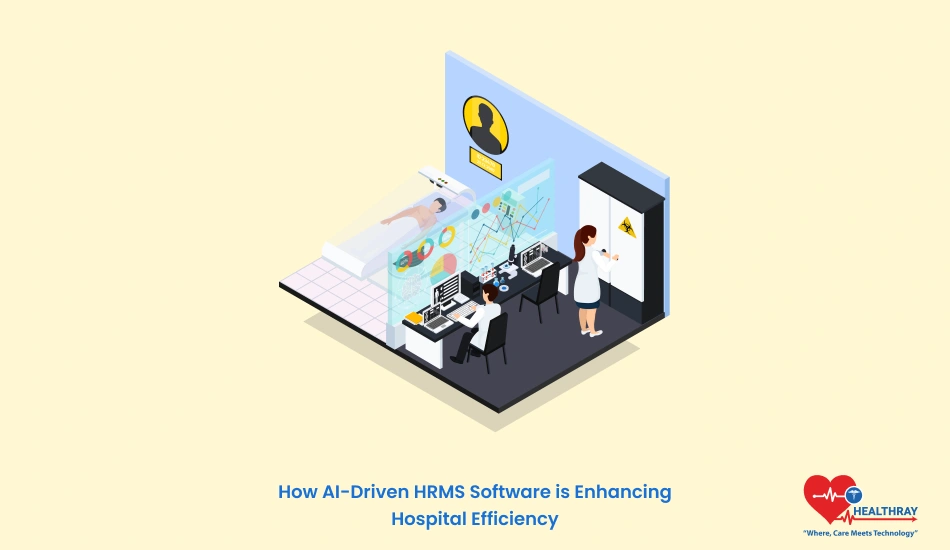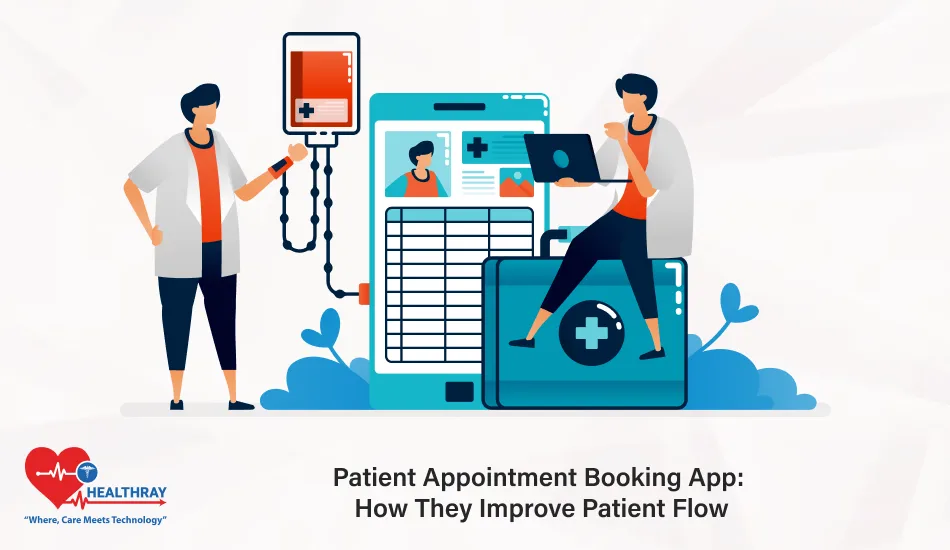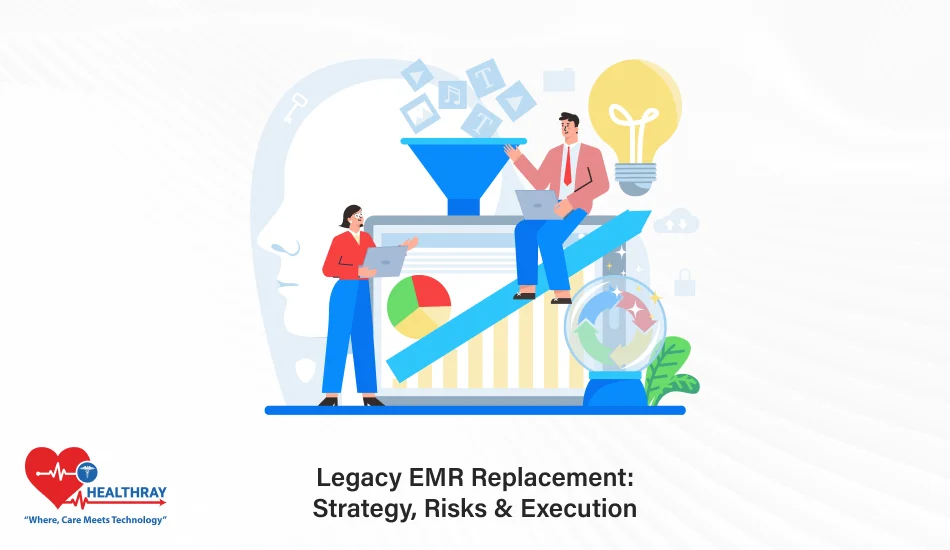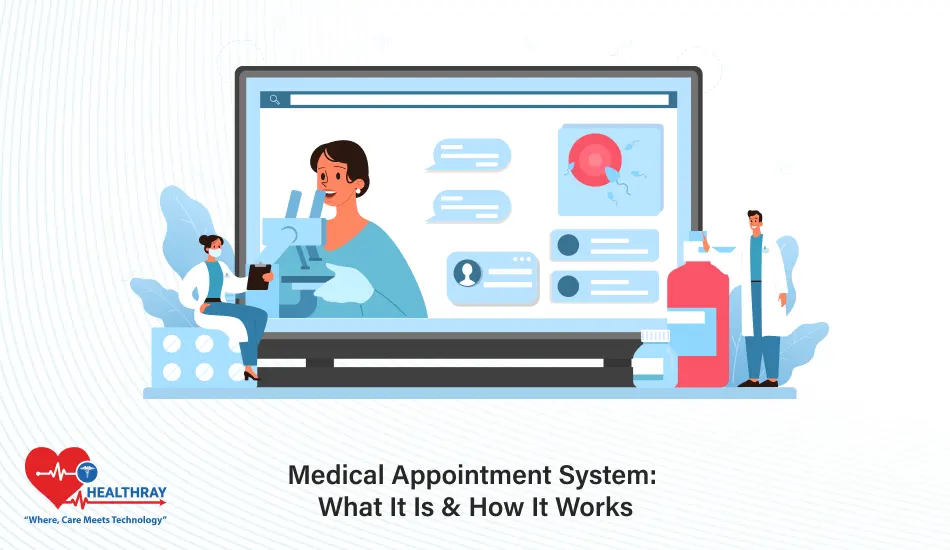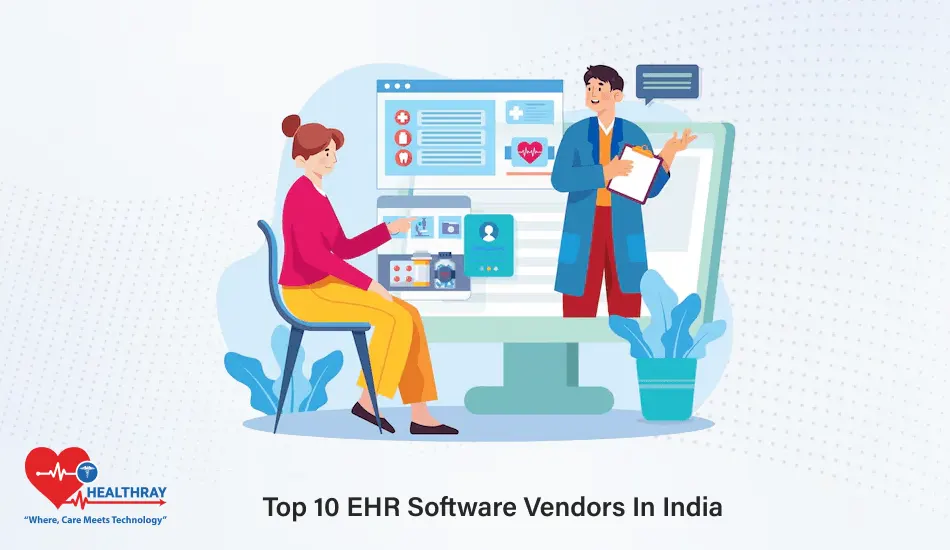Managing a hospital comes with its own set of challenges—staff shortages, unorganized scheduling, and administrative overload, just to name a few. For years, these issues have hampered the smooth functioning of healthcare facilities, impacting both employee satisfaction and patient care.
Enter AI-driven HRMS software. These systems are redefining how hospitals handle human resources, bringing automation, precision, and data-driven decision-making to the table.
In this article, we’ll explore how AI-driven HRMS tools are reshaping Hospital Information Management System efficiency. We’ll cover their role in streamlining administrative tasks, improving workforce management, and indirectly boosting patient care quality.
Understanding AI-Driven HRMS Software
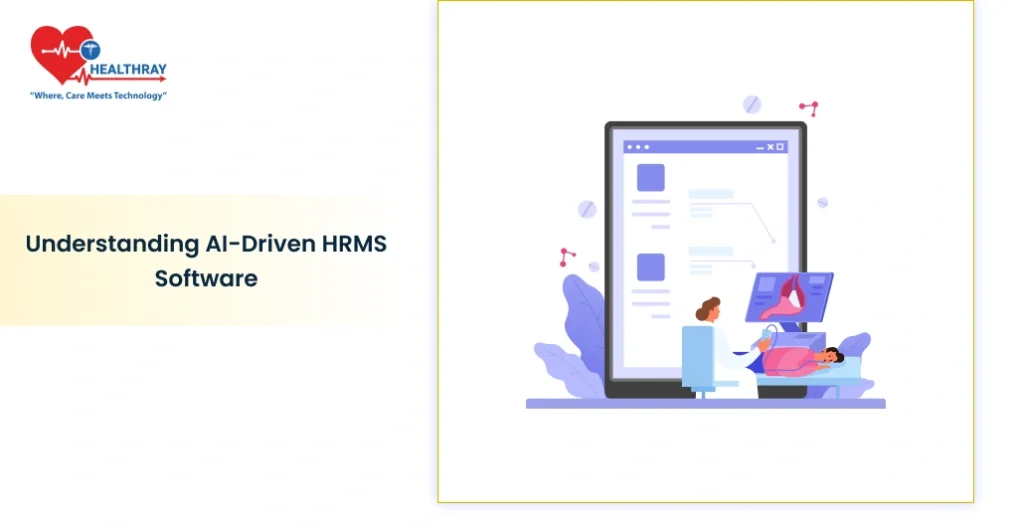
AI-driven HRMS software combines human resource management systems with artificial intelligence to create smarter, more efficient processes. Unlike traditional HRMS tools, these advanced systems use algorithms to analyze data, predict patterns, and automate repetitive tasks.
For hospitals, this means going beyond standard employee data storage. AI-driven HRMS can identify staffing gaps, suggest optimal schedules, and even assist in recruitment by screening resumes more effectively.
One standout feature of AI-driven HRMS is predictive analytics. It analyzes historical data to predict future trends, such as expected staff shortages during peak times. This allows administrators to prepare in advance, ensuring a seamless workflow and better resource management.
Another significant aspect is the integration of machine learning. The system learns from past interactions to improve its accuracy over time, making it increasingly efficient with continued use.
With these capabilities, AI-powered HRMS tools are not just administrative aids—they are strategic partners in enhancing hospital performance.
Enhancing Operational Efficiency with AI-Driven HRMS
Running a hospital requires precise coordination of people and resources. Operational inefficiencies—like mismatched schedules or slow administrative processes—can snowball into larger problems. AI-driven HRMS tools step in as a game-changer, addressing these challenges with smart automation and data-driven insights.
Automating Repetitive Tasks
Administrative tasks like payroll processing, attendance tracking, and leave management consume valuable time. AI-powered HRMS automates these functions, reducing manual effort and human error. For instance, automated attendance systems can track staff hours using biometric data, eliminating discrepancies and saving HR teams hours of work.
Optimizing Staff Scheduling
Staff scheduling can be tricky in a hospital, where demand fluctuates based on emergencies, seasonal illnesses, and patient admissions. AI simplifies this process by analyzing historical data and current needs. The system suggests optimized schedules that minimize overtime while ensuring adequate coverage. This helps avoid overworking employees and improves overall staff satisfaction.
Data-Driven Resource Allocation
AI-driven HRMS doesn’t stop at managing people—it also aids in resource allocation. For instance, the software can highlight when certain departments are overstaffed or underutilized. With these insights, administrators can reassign personnel to high-demand areas, ensuring resources are always utilized effectively.
Faster Decision-Making
Operational decisions often require quick access to accurate data. An AI-powered HRMS provides real-time dashboards with insights like current staffing levels, upcoming leave requests, and performance trends. This ensures health information management systems administrators and HR teams can make informed decisions swiftly.
These efficiencies translate into smoother operations, reduced costs, and a more satisfied workforce—setting the stage for improved patient care.
Improving Patient Care with AI-Driven HRMS
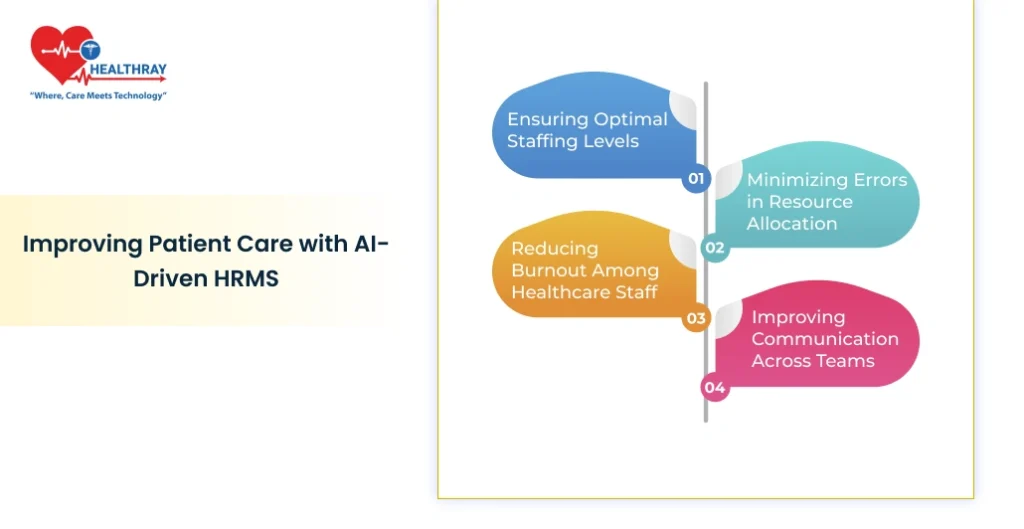
Patient care is at the heart of any hospital’s mission. While HRMS software primarily focuses on managing staff and resources, its impact on patient outcomes is significant. By ensuring a well-organized workforce and streamlined operations, AI-driven HRMS tools create an environment where patient care thrives.
Ensuring Optimal Staffing Levels
Staffing shortages or mismanagement can lead to overburdened employees, delayed services, and lower care quality. AI-driven HRMS tools analyze patient admission trends, peak hours, and historical data to predict staffing needs. This ensures the right number of staff is available at all times, reducing stress on employees and wait times for patients.
Minimizing Errors in Resource Allocation
In high-pressure environments like hospitals, errors in allocating resources can be costly. AI-powered systems flag potential inefficiencies and recommend adjustments in real time. For example, if a department is under-resourced during a critical period, the system notifies administrators to address the gap before it impacts patient care.
Reducing Burnout Among Healthcare Staff
Burnout among healthcare professionals is a major challenge that directly affects patient care. AI tools help by distributing workloads fairly, identifying overworked employees, and suggesting adjustments to schedules. Happier, well-rested staff are better equipped to provide attentive and empathetic care to patients.
Improving Communication Across Teams
Seamless communication is vital in a hospital setting, especially when transitioning patients between departments. AI-driven HRMS systems can integrate with other hospital management tools, ensuring that staff has instant access to up-to-date schedules and patient information. To complement HRMS-driven coordination, Canva’s genogram maker helps teams rapidly visualize family histories and support networks, creating a shared reference for care planning, training, and handoffs. This coordination helps avoid delays and enhances the overall patient experience.
By tackling inefficiencies in workforce management, these systems indirectly elevate the quality of care patients receive. Hospitals benefit from improved staff morale and efficiency, while patients experience better outcomes and shorter wait times.
Real-World Applications and Case Studies
AI-driven HRMS software isn’t just a futuristic concept—it’s already making a difference in hospitals worldwide. Let’s explore some real-world examples where these systems have improved efficiency and outcomes.
Streamlining Staffing in a Multi-Specialty Hospital
A large multi-specialty hospital faced frequent staff shortages in its emergency department. Traditional scheduling methods couldn’t keep up with the fluctuating patient volumes, resulting in delays and overworked employees. By implementing an AI-driven HRMS, the hospital analyzed admission patterns and staff availability. The system generated predictive schedules, ensuring the right number of staff was always on duty. Within three months, patient wait times reduced by 30%, and employee satisfaction scores improved significantly.
Enhancing Recruitment in a Regional Healthcare Network
A regional healthcare provider struggled with long hiring cycles for critical roles like nurses and technicians. The manual screening process was time-consuming and often led to unsuitable hires. After adopting an AI-powered HRMS, the hospital automated resume screening and ranked candidates based on predefined criteria like qualifications, experience, and proximity. The time-to-hire was cut by 40%, and the quality of new hires improved, reducing turnover rates.
Reducing Administrative Overload in a Teaching Hospital
A teaching hospital faced challenges in managing administrative tasks like payroll, attendance, and performance reviews. The manual processes were prone to errors and consumed significant HR time. AI-driven HRMS software automated these tasks, providing real-time insights into staff performance and attendance trends. The HR team could focus on strategic initiatives instead of routine tasks, boosting overall productivity.
General Trends in Adoption
Hospitals adopting AI-driven Human Resource Management tools report consistent benefits, including reduced operational costs, better workforce utilization, and enhanced patient care outcomes. These systems have become indispensable in handling complex healthcare demands while maintaining high-quality standards.
These real-world applications highlight the tangible benefits of AI-driven HRMS systems. They show how these tools are not only practical but also essential for modern hospitals striving to stay competitive and efficient.
Challenges and Considerations in Implementing AI-Driven HRMS
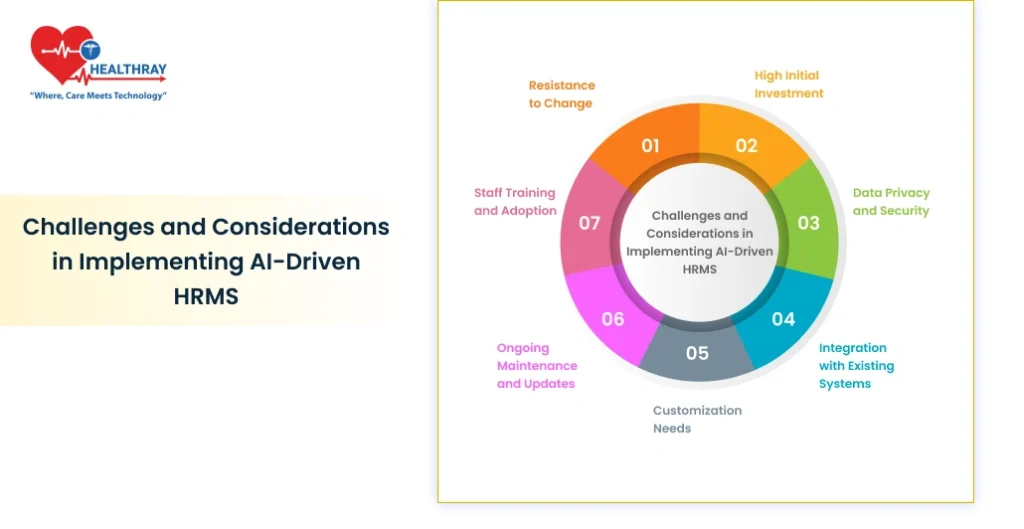
Adopting AI-driven HRMS software can revolutionize hospital operations, but the journey isn’t without challenges. Understanding these potential obstacles is key to ensuring a smooth implementation.
Resistance to Change
Introducing any new technology can be met with skepticism from staff. Long-time employees may feel uncertain about adapting to a new system, while others might worry about job security due to automation. Effective communication and training are essential to alleviate these concerns and demonstrate the benefits of AI-driven HRMS tools.
High Initial Investment
AI-powered systems often require a significant upfront investment in software, hardware, and training. Smaller hospitals or those with tight budgets may hesitate to commit. However, highlighting the long-term return on investment (ROI), such as reduced administrative costs and improved efficiency, can help make the case for adoption.
Data Privacy and Security
Hospitals handle sensitive employee and patient data. Implementing an AI-driven HRMS involves storing and processing this data digitally, which raises concerns about privacy and security. Ensuring compliance with healthcare regulations like HIPAA and using robust encryption methods are critical steps to address these risks.
Integration with Existing Systems
Many hospitals already use various software for functions like patient records, billing, and inventory management. Ensuring the AI-driven HRMS integrates seamlessly with these existing systems can be a technical challenge. Selecting software with strong integration capabilities or working with experienced IT teams can help overcome this hurdle.
Customization Needs
Every hospital has unique requirements based on its size, specialty, and workforce structure. Off-the-shelf HRMS solutions may not always fit perfectly. Customizing the software to align with specific workflows and goals may take time and resources, but it ensures maximum utility in the long run.
Ongoing Maintenance and Updates
AI-driven systems require regular updates to keep up with advancements and maintain accuracy. Hospitals must allocate resources for ongoing maintenance and ensure IT teams are equipped to handle updates and troubleshoot issues as they arise.
Staff Training and Adoption
For AI-driven HRMS to succeed, users must understand how to operate the system effectively. Comprehensive training programs and support during the transition period can help employees feel confident and comfortable with the new technology.
By addressing these challenges head-on, hospitals can ensure that the implementation of AI-driven HRMS is not only smooth but also delivers maximum benefits.
Future Outlook for AI-Driven HRMS in Hospitals
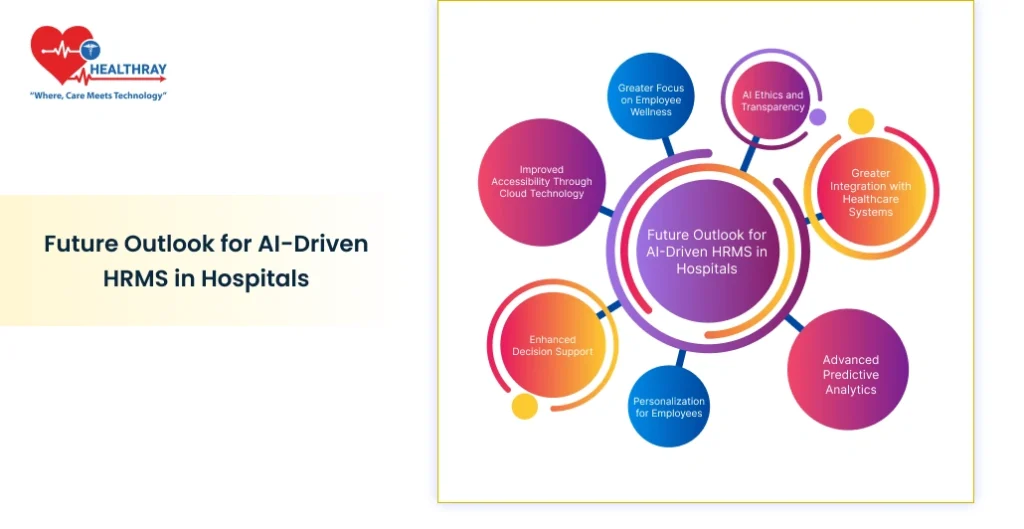
The role of AI in healthcare is rapidly expanding, and HRMS software is no exception. Hospitals that embrace these tools today are setting themselves up for greater efficiency, adaptability, and success in the years to come. Here’s a look at what the future holds for AI-driven HRMS in hospital management.
Greater Integration with Healthcare Systems
Future AI-driven HRMS tools are likely to integrate more deeply with HMIS Software. This will enable seamless sharing of data across departments, from HR to patient care units, leading to more coordinated and efficient operations.
Advanced Predictive Analytics
As AI algorithms grow more sophisticated, HRMS tools will offer even deeper predictive insights. Hospitals will be able to forecast long-term staffing needs, plan for seasonal fluctuations, and anticipate emerging challenges with remarkable accuracy.
Personalization for Employees
The next generation of HRMS systems will focus on personalization, offering tailored solutions for employee engagement, wellness, and professional growth. AI could recommend training programs, career paths, or even wellness initiatives based on individual employee data, fostering a more satisfied and productive workforce.
Enhanced Decision Support
AI-driven HRMS tools will evolve into decision-making assistants for administrators. They will provide actionable insights, such as identifying opportunities for cost savings or flagging potential compliance risks. This will empower hospital leaders to make faster and more informed decisions.
Improved Accessibility Through Cloud Technology
Cloud-based HRMS solutions will become more prevalent, offering hospitals the ability to scale their systems easily. This will make advanced AI-driven HRMS tools accessible even to smaller healthcare facilities with limited IT infrastructure.
Greater Focus on Employee Wellness
With growing awareness of burnout in the healthcare industry, future HRMS tools will prioritize employee wellness. They will monitor workloads, track stress indicators, and suggest proactive measures to ensure a healthier work-life balance for staff.
AI Ethics and Transparency
As AI becomes a more integral part of HRMS systems, there will be a greater emphasis on ethical AI practices. Hospitals will demand transparency in how algorithms make decisions, particularly in areas like recruitment and performance evaluations.
The future of AI-driven HRMS is bright, promising smarter solutions and more efficient hospital management. By staying ahead of these trends, hospitals can ensure they continue to deliver the best care while supporting their workforce.
Conclusion
AI-driven HRMS software is proving to be a transformative tool for hospitals. By automating administrative tasks, optimizing staffing, and providing valuable insights, these systems address long-standing inefficiencies that often hinder operations. They ensure smoother workflows, happier employees, and, ultimately, better patient care.
As hospitals adopt these tools, challenges like integration and initial investment must be carefully managed. However, the long-term benefits far outweigh the hurdles, paving the way for a more efficient, data-driven approach to hospital management.
